SPAIN
2009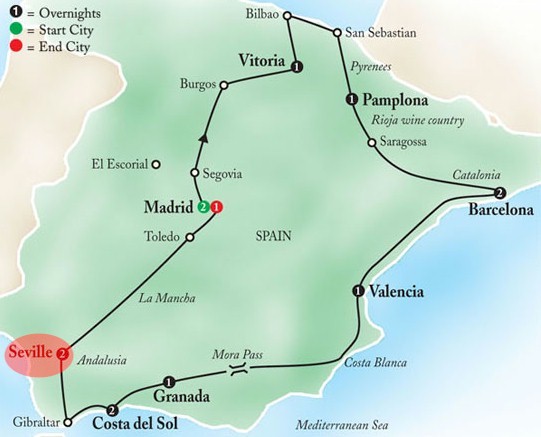
Day
13 May 22
Friday
SEVILLE
We
could sleep late because our tour didn’t start until 10:00 am.
The breakfast buffet in the hotel was one of the best of the tour.
We got on the bus with a local tour guide.
He was young and very good. 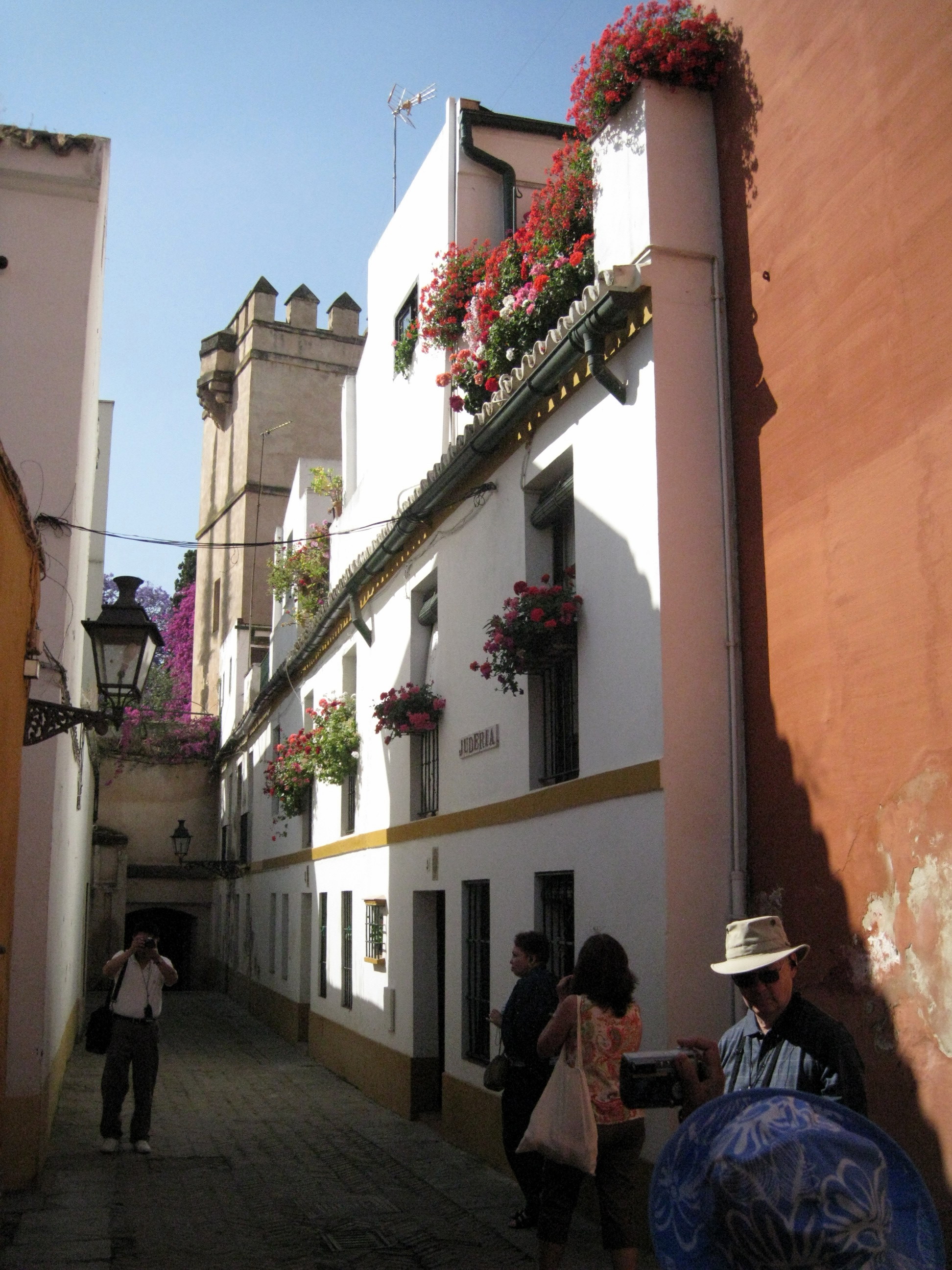
We
drove around for a while and then stopped near the Jewish Quarter.
What
was once a ghetto for Spanish Jews, who were forced out of Spain in the late
15th century in the wake of the Inquisition, is today Seville's most colorful
district. Near the old walls
of the Alcázar, winding medieval streets open onto tiny plazas. Flower-filled
balconies with draping bougainvillea and potted geraniums hang over this
labyrinth of streets. We
walked through it. It was very
beautiful. There are a number of cafés in this area.
We didn’t have time to take it all in.
It would have been nice to have more time to look at the beautiful little
houses and shops.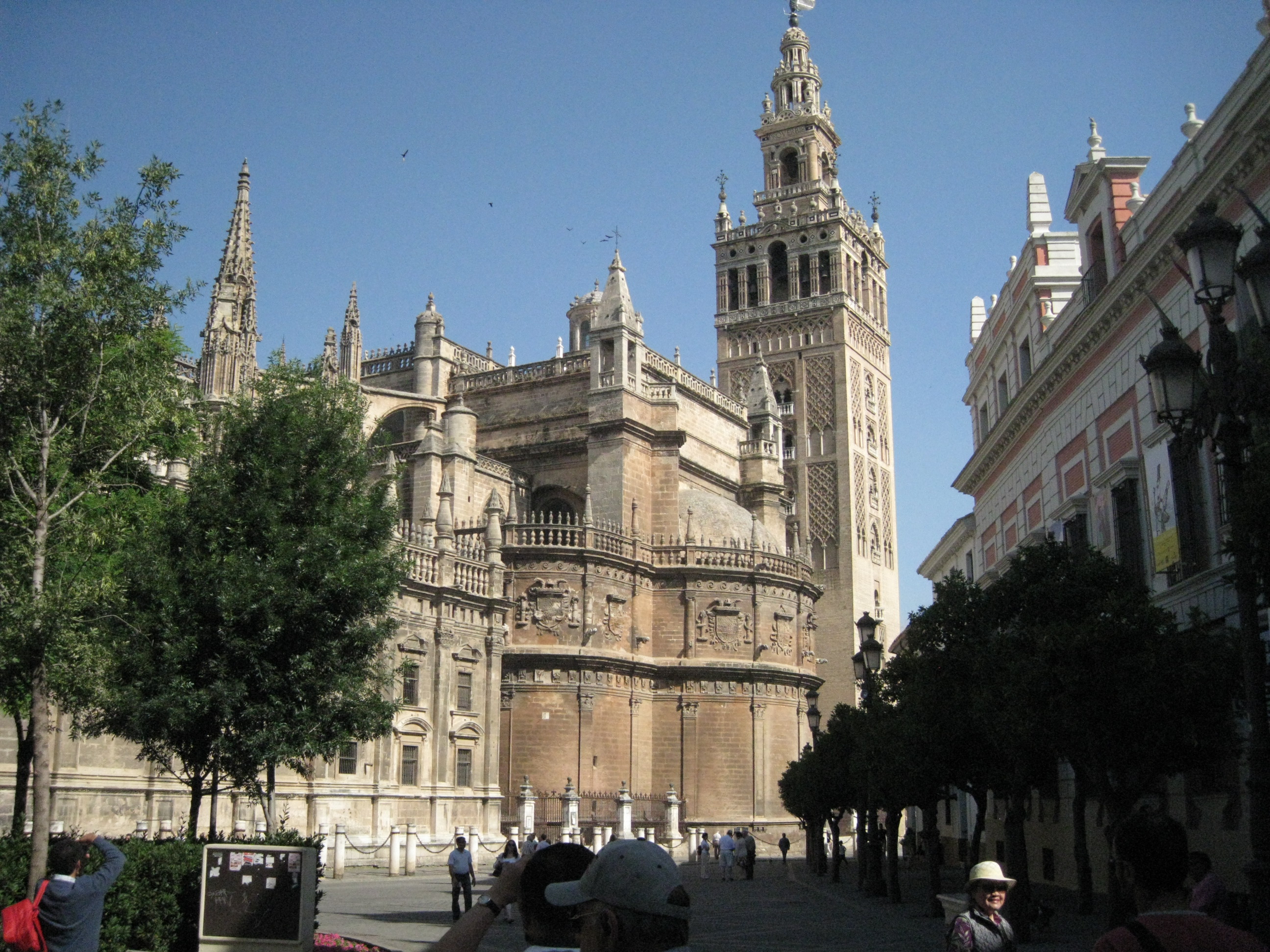
At
11:00 we were able to go into the Cathedral.
Depending on who is giving the information, this cathedral is either the
largest or second largest in the world. We
said at the Washington Cathedral that St. Peter’s, Rome was the largest and
Seville was second and the Washington Cathedral the sixth. Some
people don’t count St. Peter’s as a cathedral, which of course it isn’t.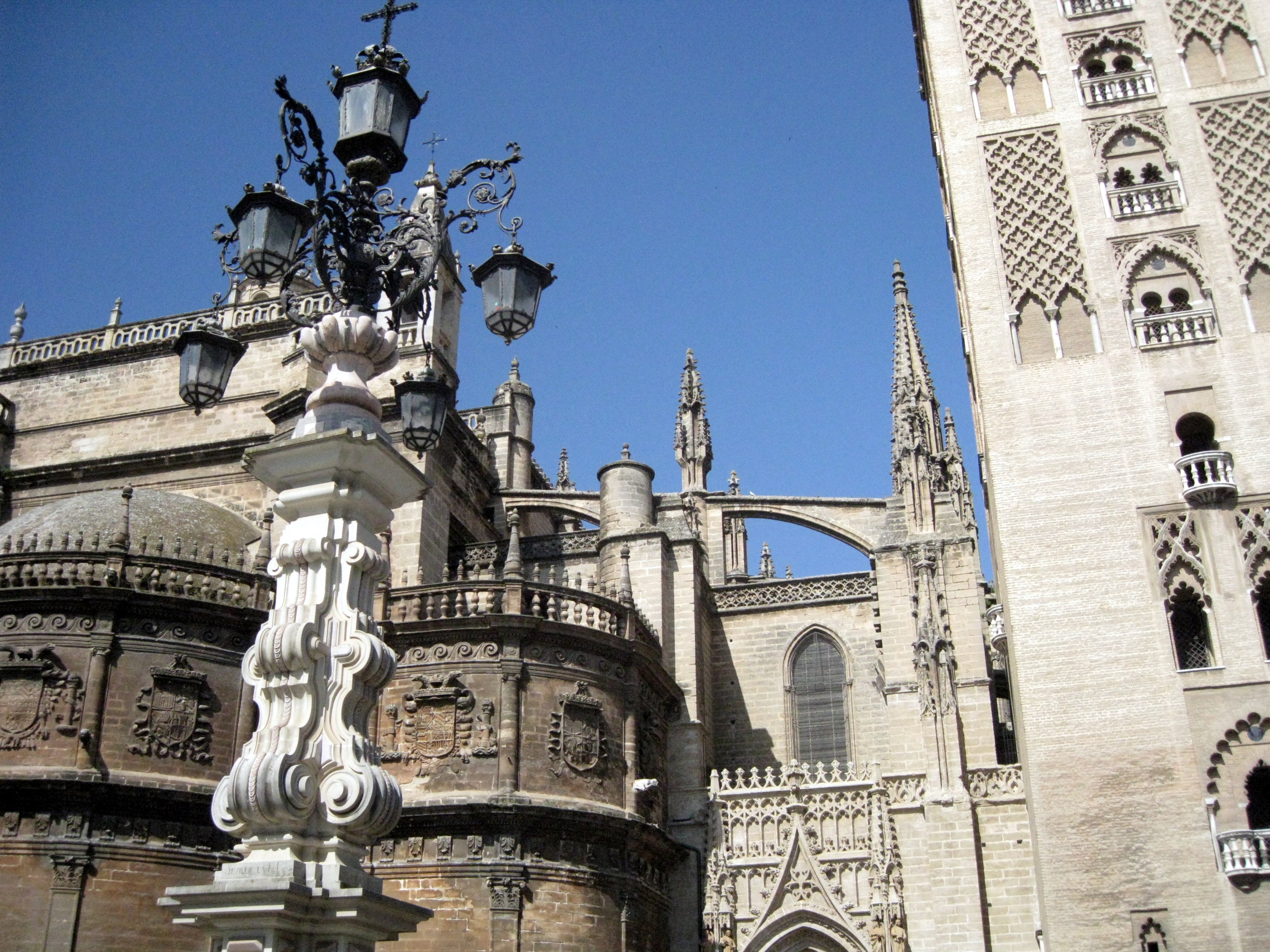
When
Ferdinand III, re-established Christianity in Seville after conquering the city
from the Almohades, founders of the fifth Moorish dynasty,
on November 23, 1248, he did the same as he had done previously in Cordoba and
in many other places: he converted the Moorish mosque into a cathedral.
This mosque was much larger than Cordoba.
In this mosque/cathedral for a century and a half the Seville Church was
returned to the times of the Visigoths. The
mosque/cathedral was seriously damaged by an earthquake in 1356 and again in
1395. In 1401 the canons decided to
build a new church –“that should be made such and so well that it should
have not equals”. By the time of
Ferdinand the influence of Gothic had reach Spain.
The first stone is believed to have been laid in 1403.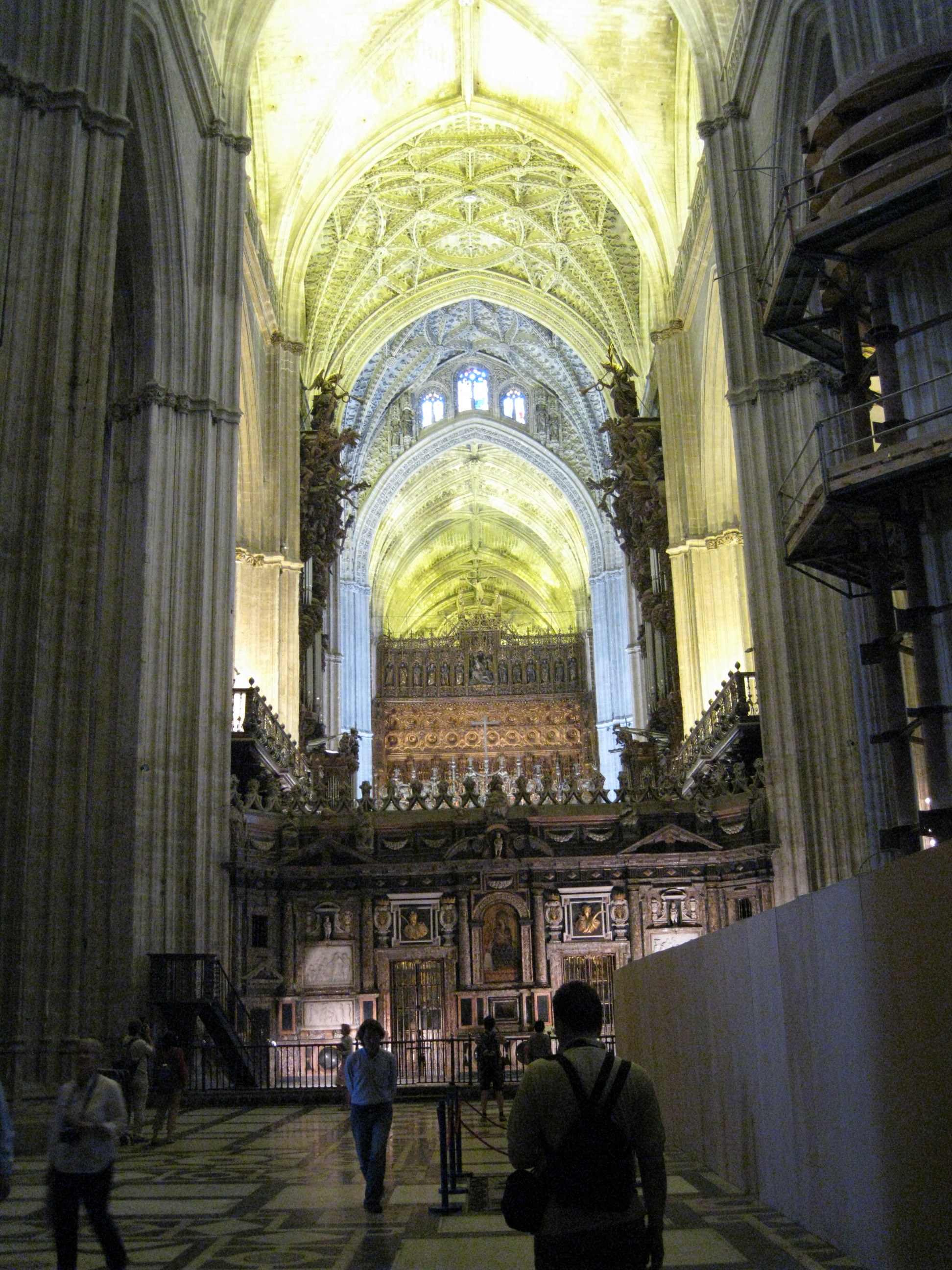
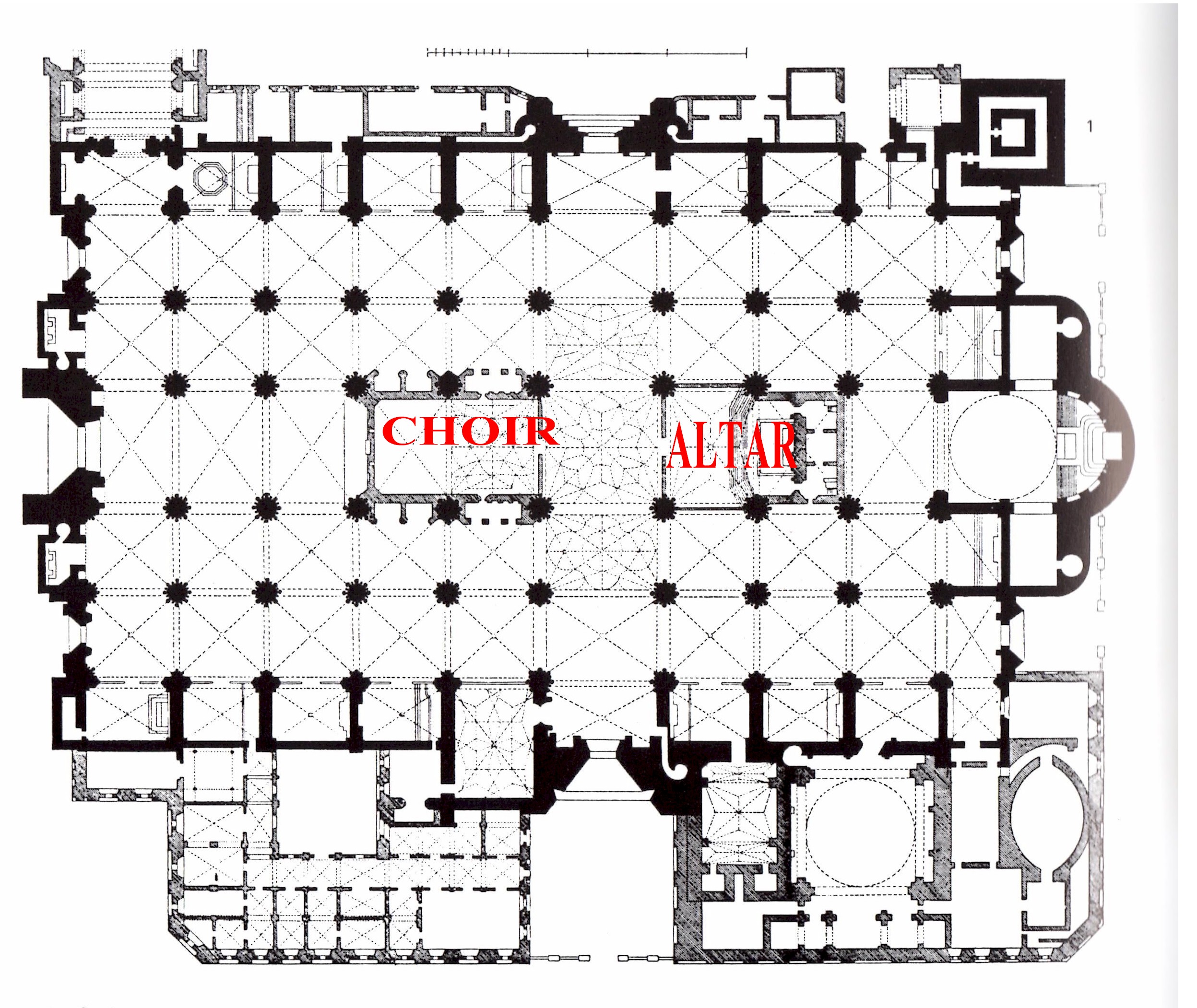
The
church is 414 ft. long, 271 ft. wide and 100 ft. high. The central nave is 134
ft. long and the central dome reaches 143 ft. The nave and its four aisles are
supported by 36 columns which support 68 vaults.
The cathedral was not blessed and officially opened until May 11, 1507.
As we have seen in other cathedrals that is a choir in the middle with no
open view of the high altar from the west door.
There was some restoration-construction going on at the west end which
eliminated some of the seating during this time.
Because of the height of the nave, I was able to take photos of the
entire nave, over the top of the choir area.
Part of the top the Reredos of the main altar could be seen.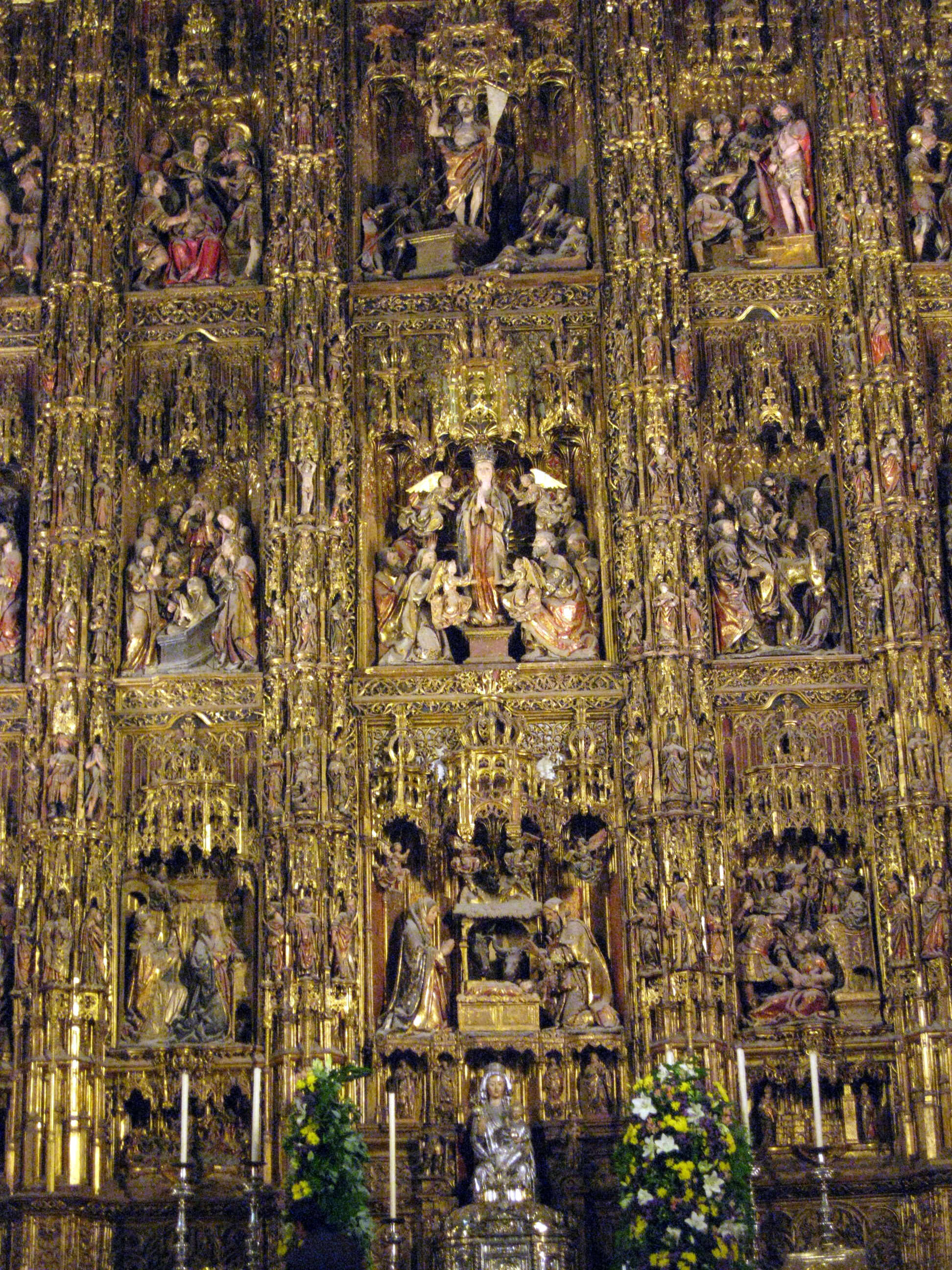
The
altar piece over the high altar is the largest and certainly one of the most
magnificent altar pieces that we have seen.
It measures 65 ft high and 59 ft wide.
It portrays the life of Christ in 28 niches, separated by a mesh of
pilasters, ledges, daises between which are distributed 189 minor sculptures.
During
the construction work, a more modern altar had been put in the center of the
south transept for larger congregations.
The chairs could be turned from the high altar to face south.
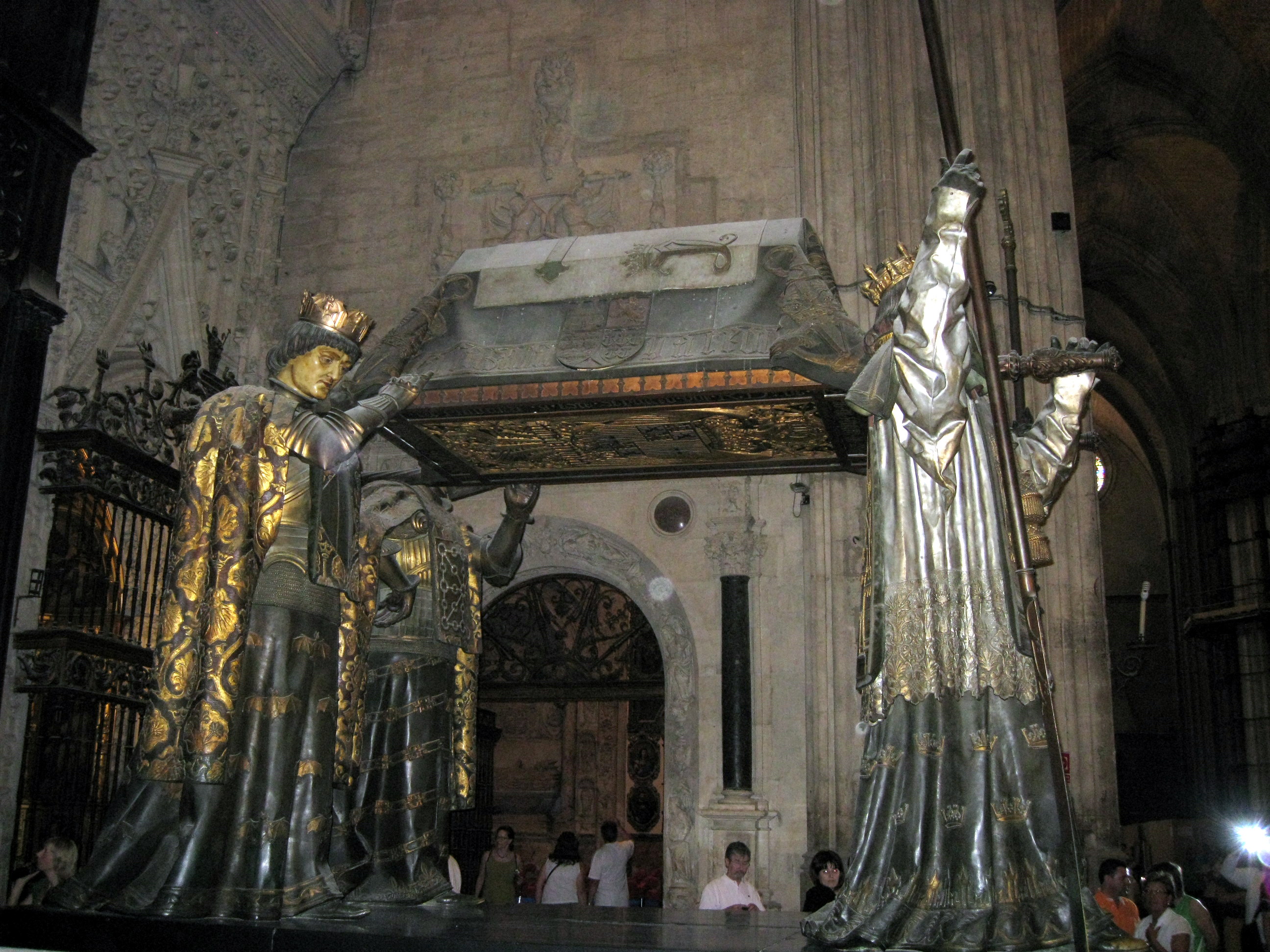
They
could be extended northward towards the tomb of Christopher Columbus which
occupied a large space in the center of the north transept.
There is a lot of controversy about ALL of the remains of Columbus.
His remains were deposited in this tomb in 1902.
It is shown being carried by the kings of the four original regions of
Spain: Castile, Leon, Aragon and Navarre.
One
enters the Giralda, the tower, from the inside of the Cathedral.
This tower formed the minaret of the mosque which be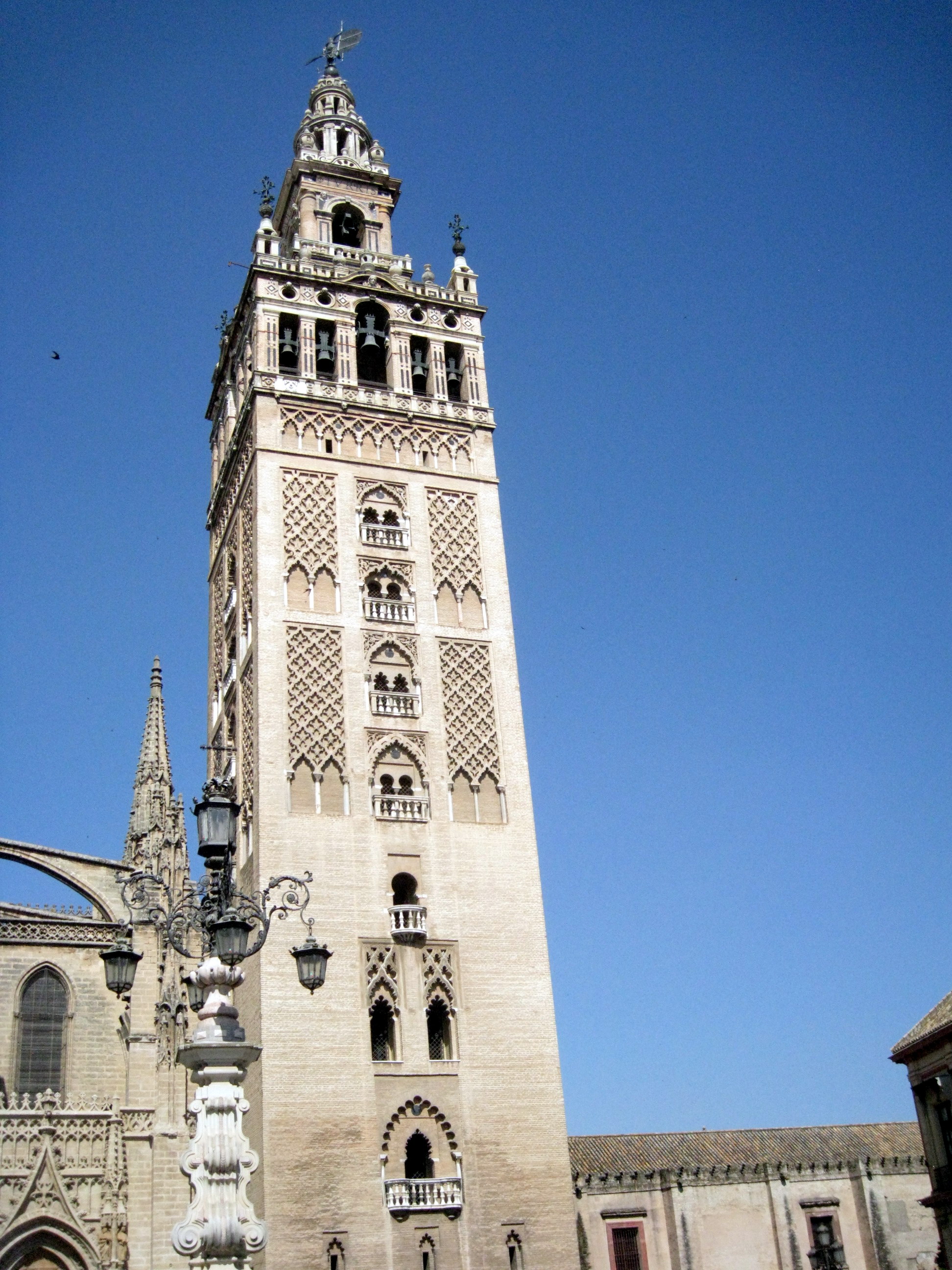 gan to be built in
1184 and finished in 1198. It
had been crowned by four large golden apples.
These fell during the 1356 earthquake.
The tower was then completed by a simple bell tower commissioned by King
Pedro I. The present
bell tower was commissioned in 1558 and took years to complete.
At the top is a bronze stature of Faith which revolves acting as a
weather vane.
gan to be built in
1184 and finished in 1198. It
had been crowned by four large golden apples.
These fell during the 1356 earthquake.
The tower was then completed by a simple bell tower commissioned by King
Pedro I. The present
bell tower was commissioned in 1558 and took years to complete.
At the top is a bronze stature of Faith which revolves acting as a
weather vane.
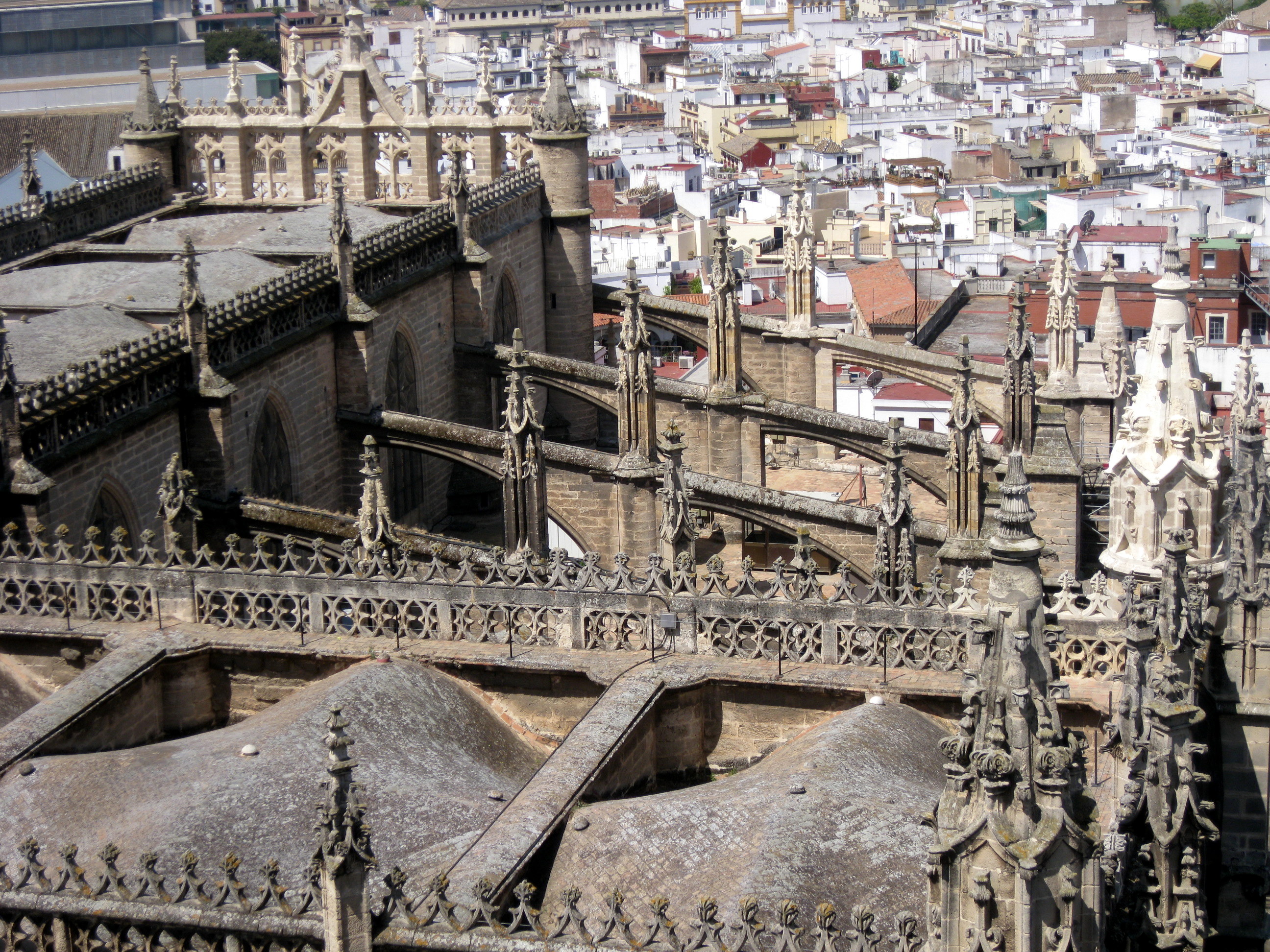
The
inside consists of 35 ramps instead of steps.
It is said this was done to make easy access to the top by riding horses
and mules to the top. I walked
up to the top…it was exhausting. The
view was spectacular from the top. It
was interesting to look down on the construction of the cathedral and the flying
buttresses. We made a stop in
the bookstore.
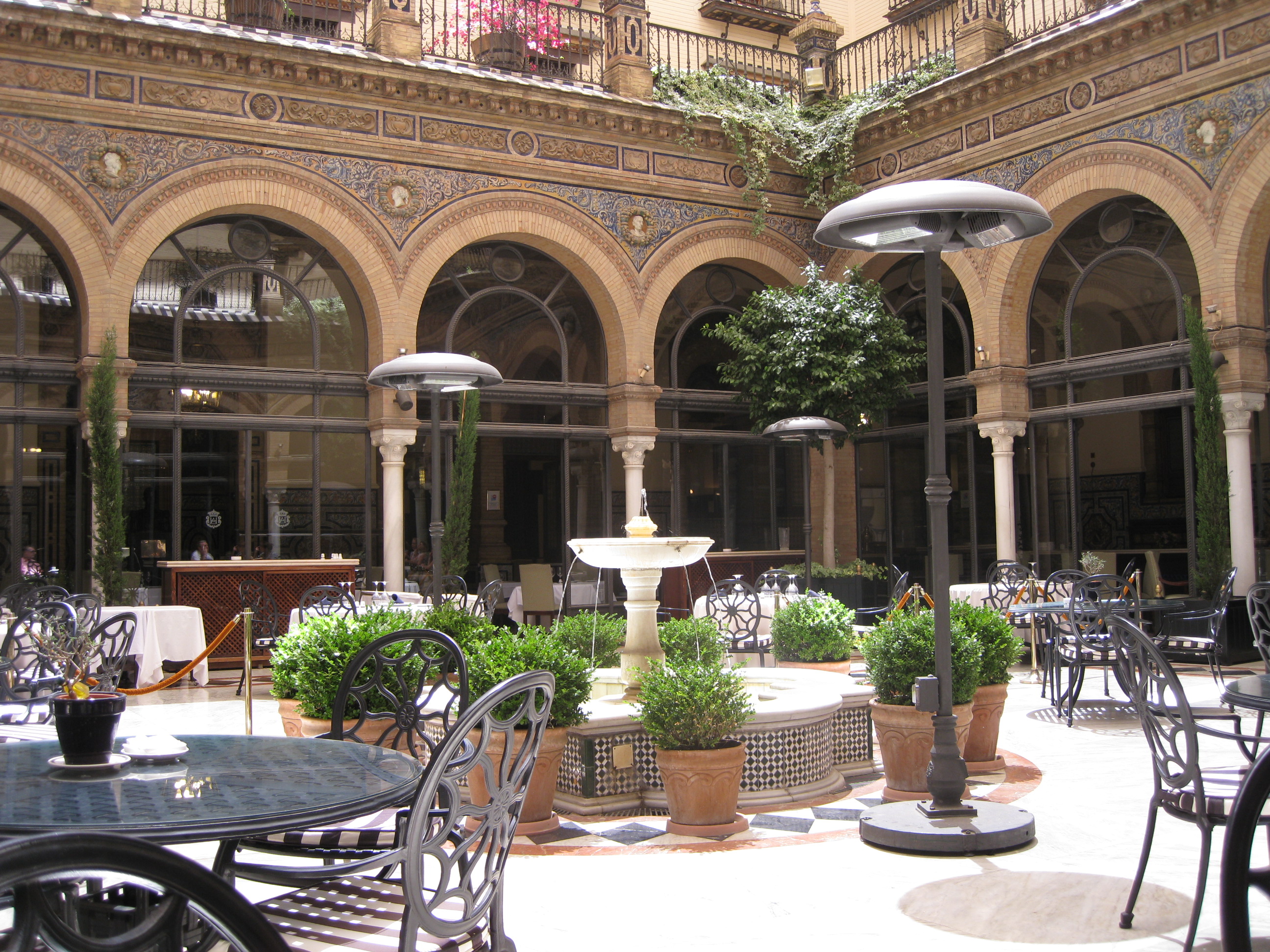
We
walked down to the famous Alfonso XIII hotel where we had a snack lunch in the
open courtyard. We had ham croquettes and small omelets.
Our lunch was elegant, but we also saw that if we had chosen a three hour
lunch, which is a traditional Spanish lunch, it would have been even more
elegant. It was beginning to get
rather hot as we walked back to the Alcazar for a tour.
The
Alcázar was originally a Moorish
fort. The Almohades ,
were
the
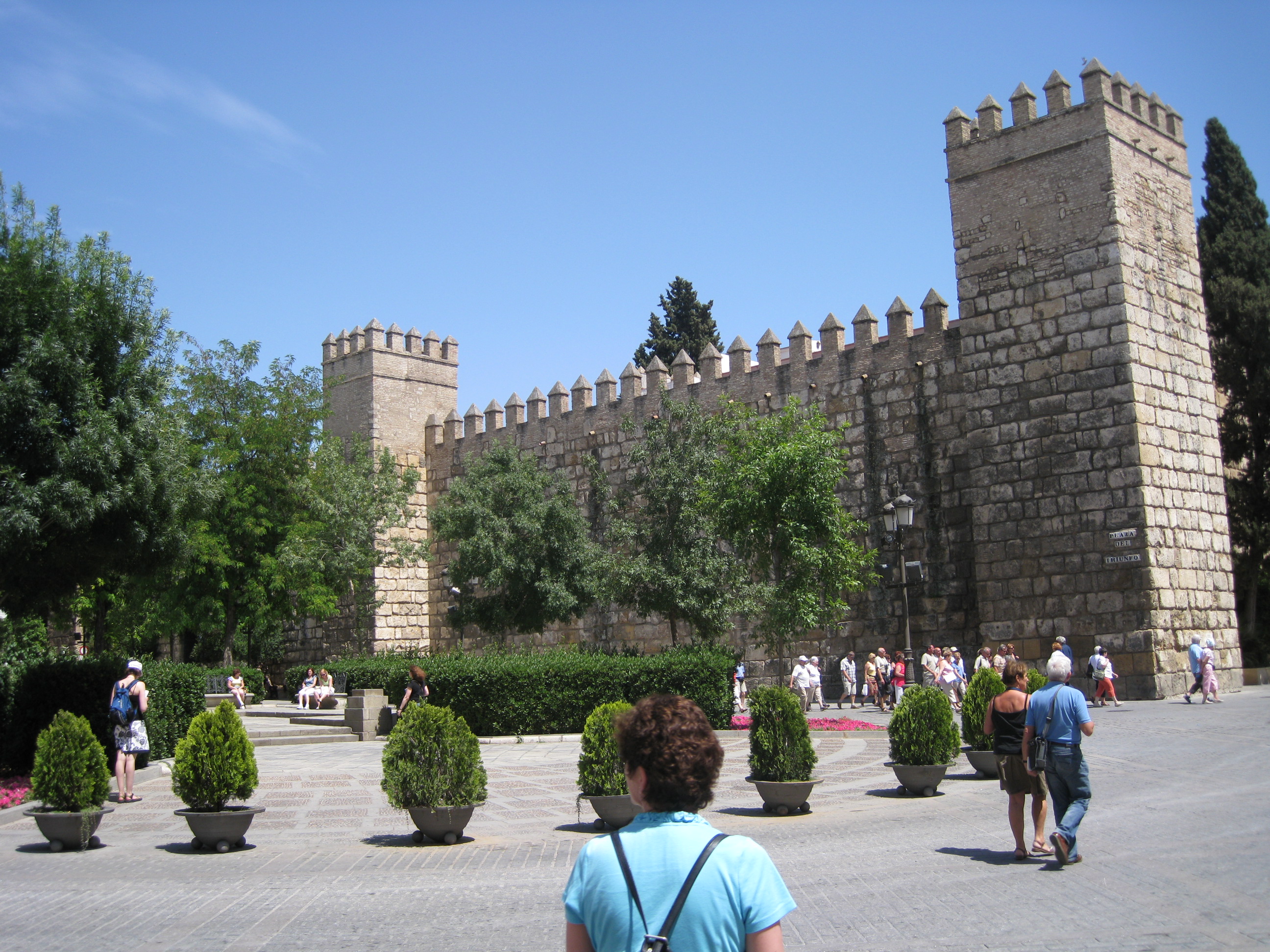 first to build a palace, which was called Al-Muwarak, on the site of the
modern day Alcázar. The palace is one of the best remaining examples of mudejar
architecture.
first to build a palace, which was called Al-Muwarak, on the site of the
modern day Alcázar. The palace is one of the best remaining examples of mudejar
architecture.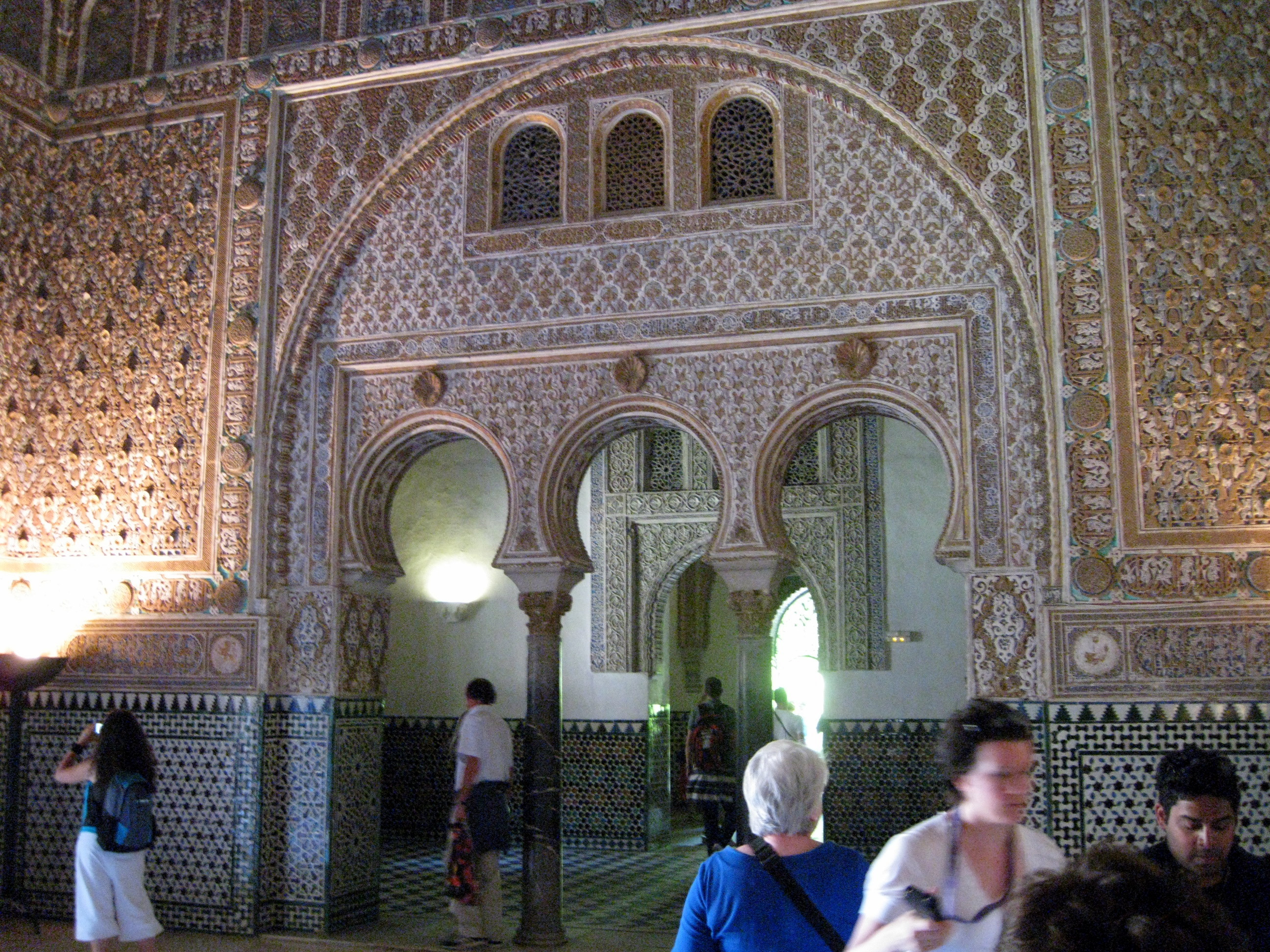
Subsequent
monarchs have added their own additions to the Alcázar. The upper levels of the
Alcázar are still used by the royal family as the official Seville residence.
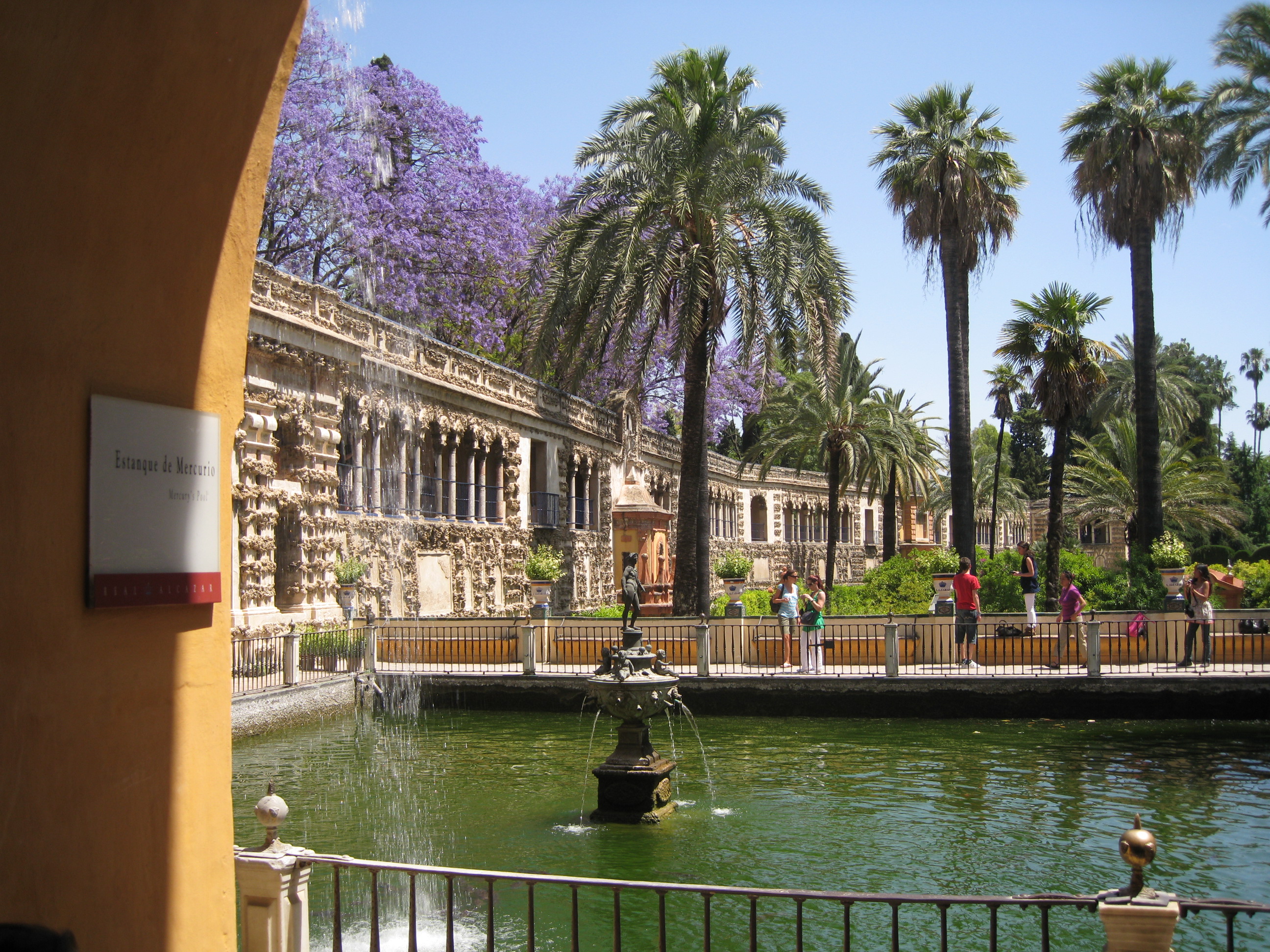
It
was beautiful place. We especially
enjoyed the lovely gardens.
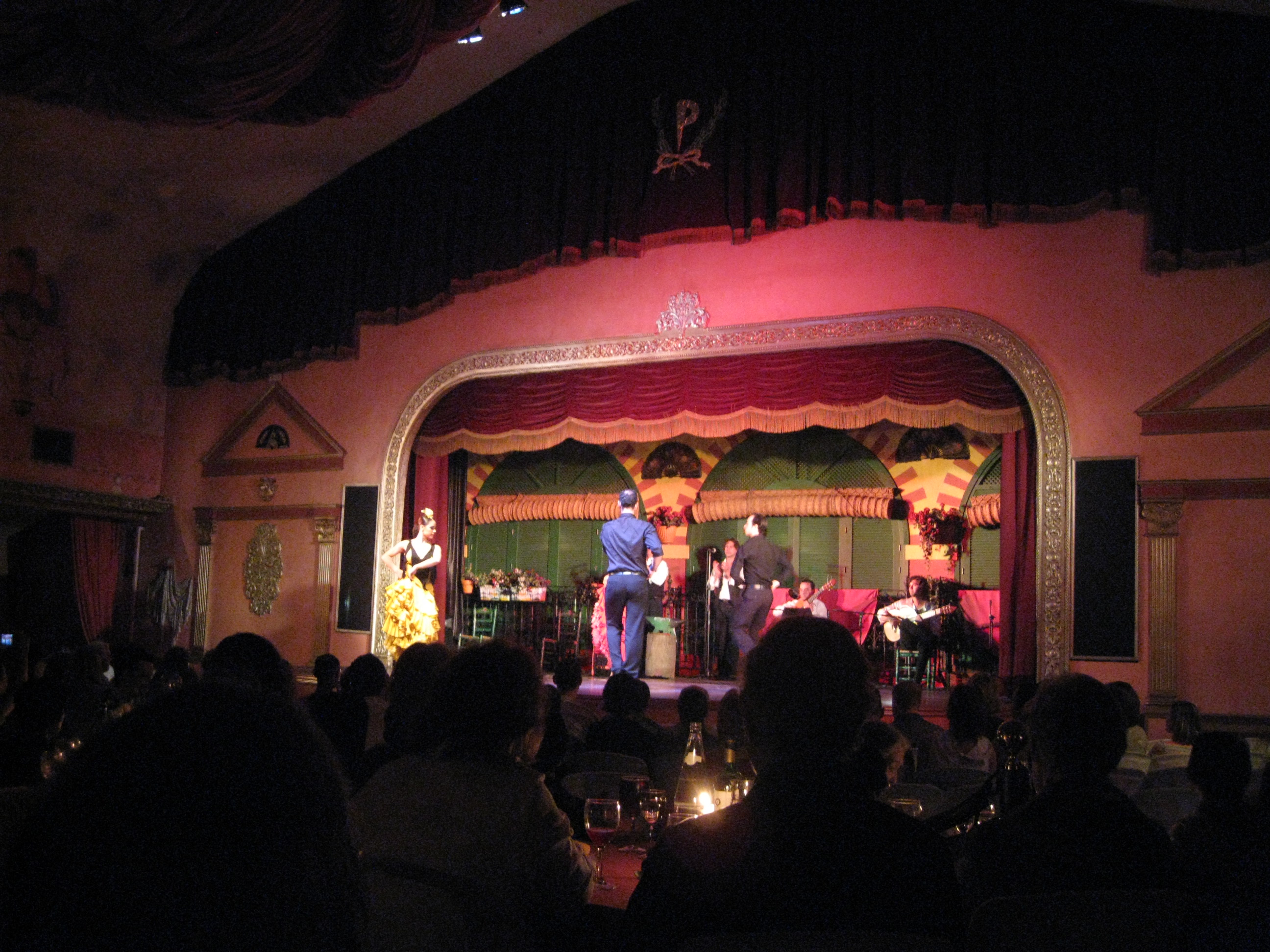 It
was getting close to 4:00 so we decided to take a taxi back to the hotel.
My wife took a rest. Then we dressed for our Andalusian Night, dinner
and flamenco show. It was a
typical dinner theater space…tables for dinner and chairs in the front for
those who got drinks only. We had a
good dinner with wine. The
show was wonderful…good music and dancers.
Everyone was in a festive mood. Some
of our group had gotten dressed up. One
woman wore a sari. We had a fun
time!
It
was getting close to 4:00 so we decided to take a taxi back to the hotel.
My wife took a rest. Then we dressed for our Andalusian Night, dinner
and flamenco show. It was a
typical dinner theater space…tables for dinner and chairs in the front for
those who got drinks only. We had a
good dinner with wine. The
show was wonderful…good music and dancers.
Everyone was in a festive mood. Some
of our group had gotten dressed up. One
woman wore a sari. We had a fun
time!








 gan to be built in
1184 and finished in 1198. It
had been crowned by four large golden apples.
These fell during the 1356 earthquake.
The tower was then completed by a simple bell tower commissioned by King
Pedro I. The present
bell tower was commissioned in 1558 and took years to complete.
At the top is a bronze stature of Faith which revolves acting as a
weather vane.
gan to be built in
1184 and finished in 1198. It
had been crowned by four large golden apples.
These fell during the 1356 earthquake.
The tower was then completed by a simple bell tower commissioned by King
Pedro I. The present
bell tower was commissioned in 1558 and took years to complete.
At the top is a bronze stature of Faith which revolves acting as a
weather vane. 
 first to build a palace, which was called Al-Muwarak, on the site of the
modern day Alcázar. The palace is one of the best remaining examples of mudejar
architecture.
first to build a palace, which was called Al-Muwarak, on the site of the
modern day Alcázar. The palace is one of the best remaining examples of mudejar
architecture.
 It
was getting close to 4:00 so we decided to take a taxi back to the hotel.
My wife took a rest. Then we dressed for our Andalusian Night, dinner
and flamenco show. It was a
typical dinner theater space…tables for dinner and chairs in the front for
those who got drinks only. We had a
good dinner with wine. The
show was wonderful…good music and dancers.
Everyone was in a festive mood. Some
of our group had gotten dressed up. One
woman wore a sari. We had a fun
time!
It
was getting close to 4:00 so we decided to take a taxi back to the hotel.
My wife took a rest. Then we dressed for our Andalusian Night, dinner
and flamenco show. It was a
typical dinner theater space…tables for dinner and chairs in the front for
those who got drinks only. We had a
good dinner with wine. The
show was wonderful…good music and dancers.
Everyone was in a festive mood. Some
of our group had gotten dressed up. One
woman wore a sari. We had a fun
time!


